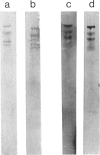Abstract
Antibodies reacting with human spermatozoa have been detected by various immunological techniques in the sera of subfertile men. Different patterns of sperm agglutination are observed with different sera, either head-to-head, tail-to-tail, or tail-tip-to-tail-tip. Differences have been detected between the clinically relevant antibodies in spontaneously infertile males and the less important antibodies in males who have undergone reversal of vasectomy. It has been suggested that the variations in agglutination patterns are due either to different classes of antibody or to binding of antibody to different antigens. In the present study immunoblotting techniques were used to characterize the reactivity of solubilized sperm proteins with serum samples exhibiting different modes of sperm agglutination. This involved the electrophoretic transfer of proteins from SDS gels to nitrocellulose sheets followed by overlay with serum antibody. Using these techniques we have attempted to characterize the antigens of spermatozoa which react with sera from both spontaneously infertile and vasovasostomized men. The results showed that although antisperm antibodies bind to discrete and sperm-associated antigens, there is no substantial difference between the antigenic patterns observed with antibodies producing different types of sperm agglutination. Neither the antigens detected, nor the intensity of reaction showed significant differences although there was a tendency for head-to-head agglutinating antibodies to react more strongly with the higher molecular weight antigens. Moreover, although with sequential serum samples the patterns of agglutination may change, the antigenic pattern remains unchanged.
Full text
PDF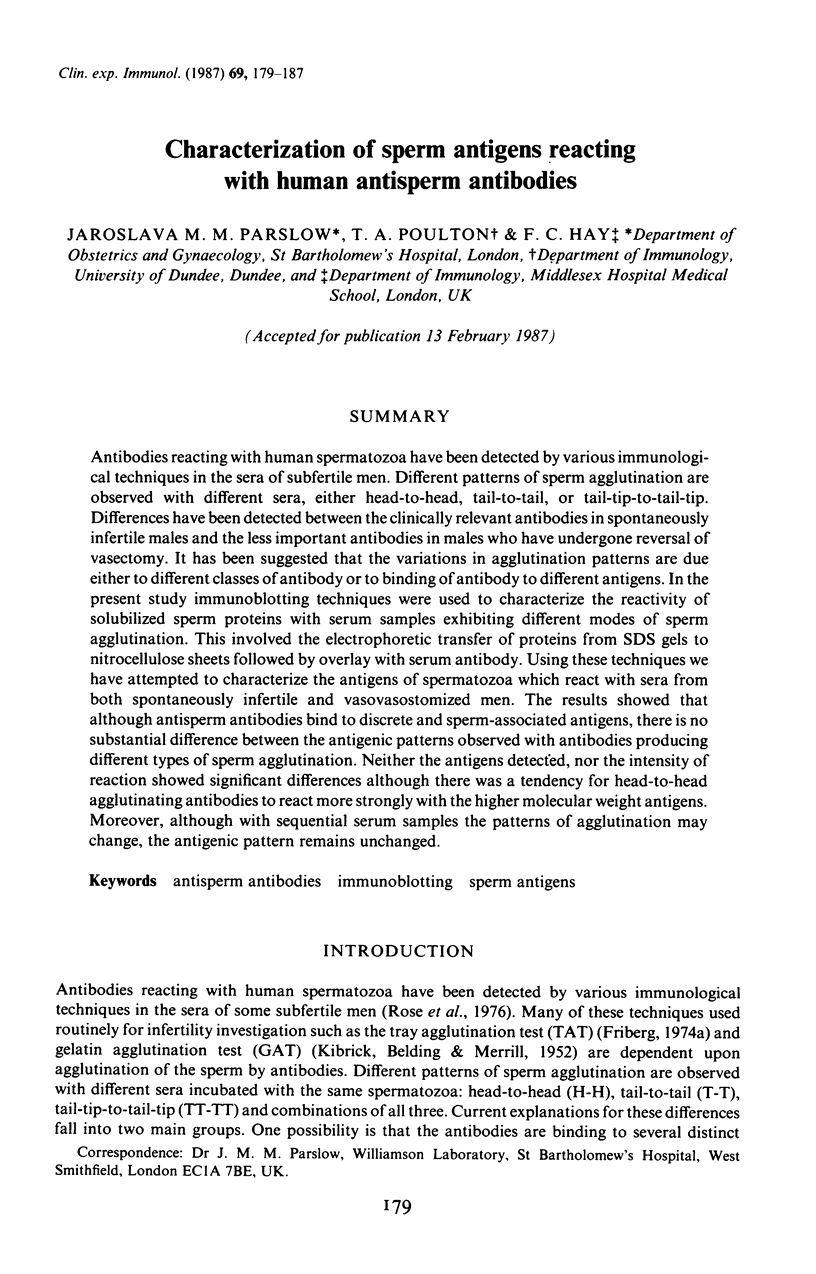
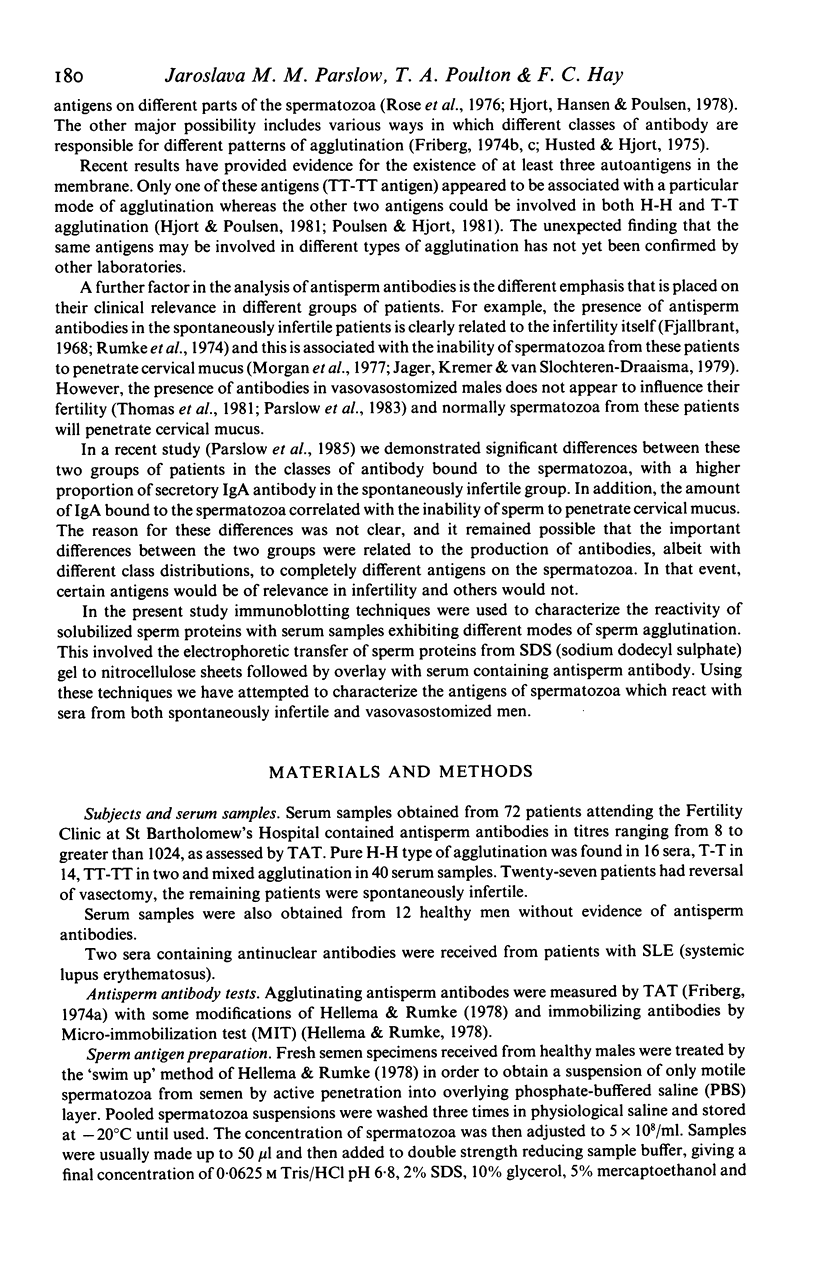
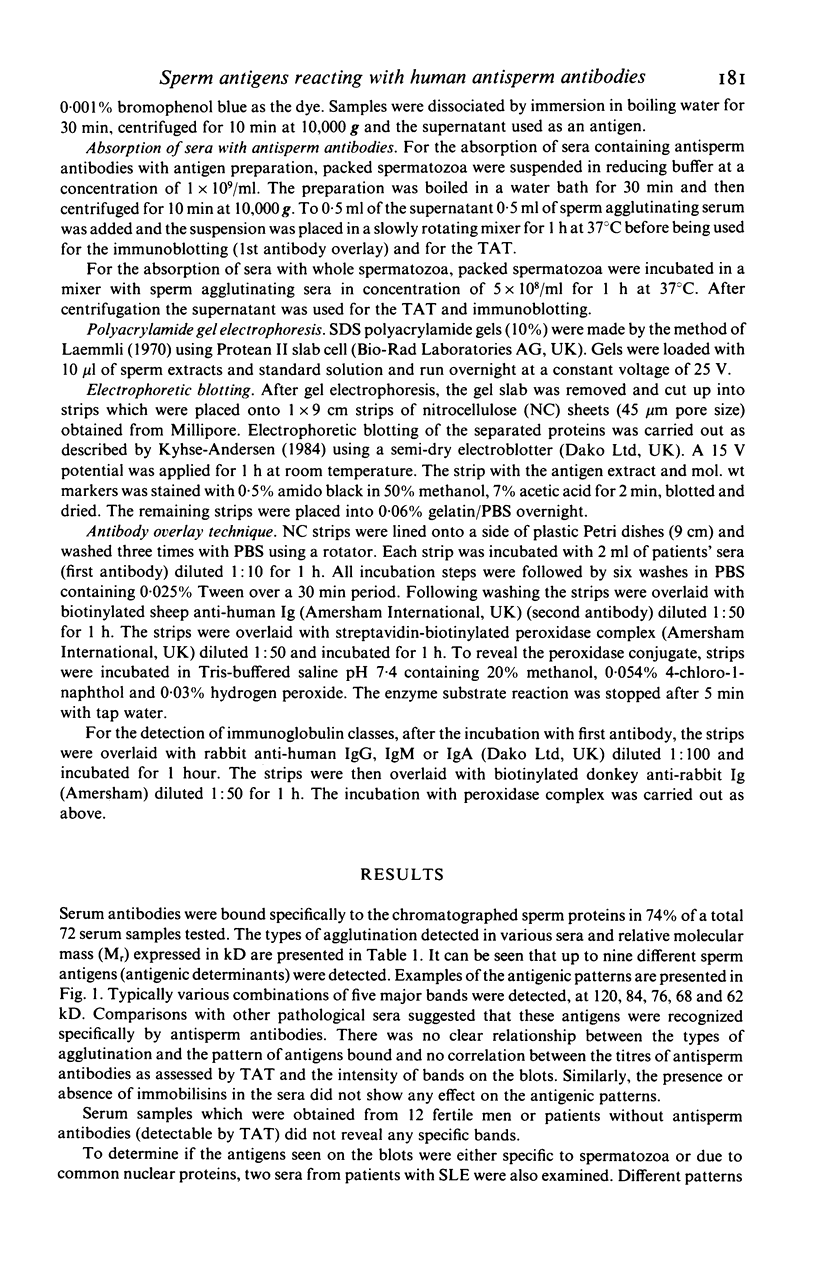
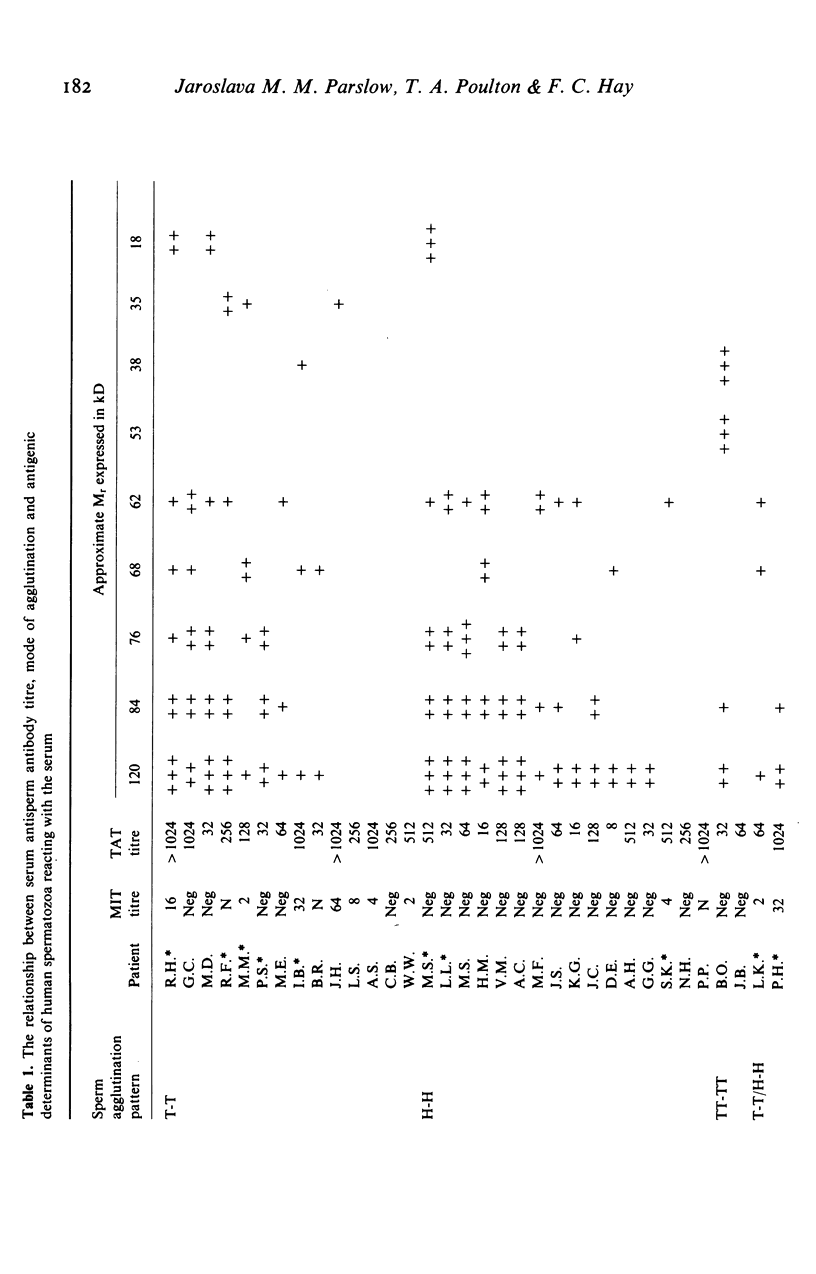
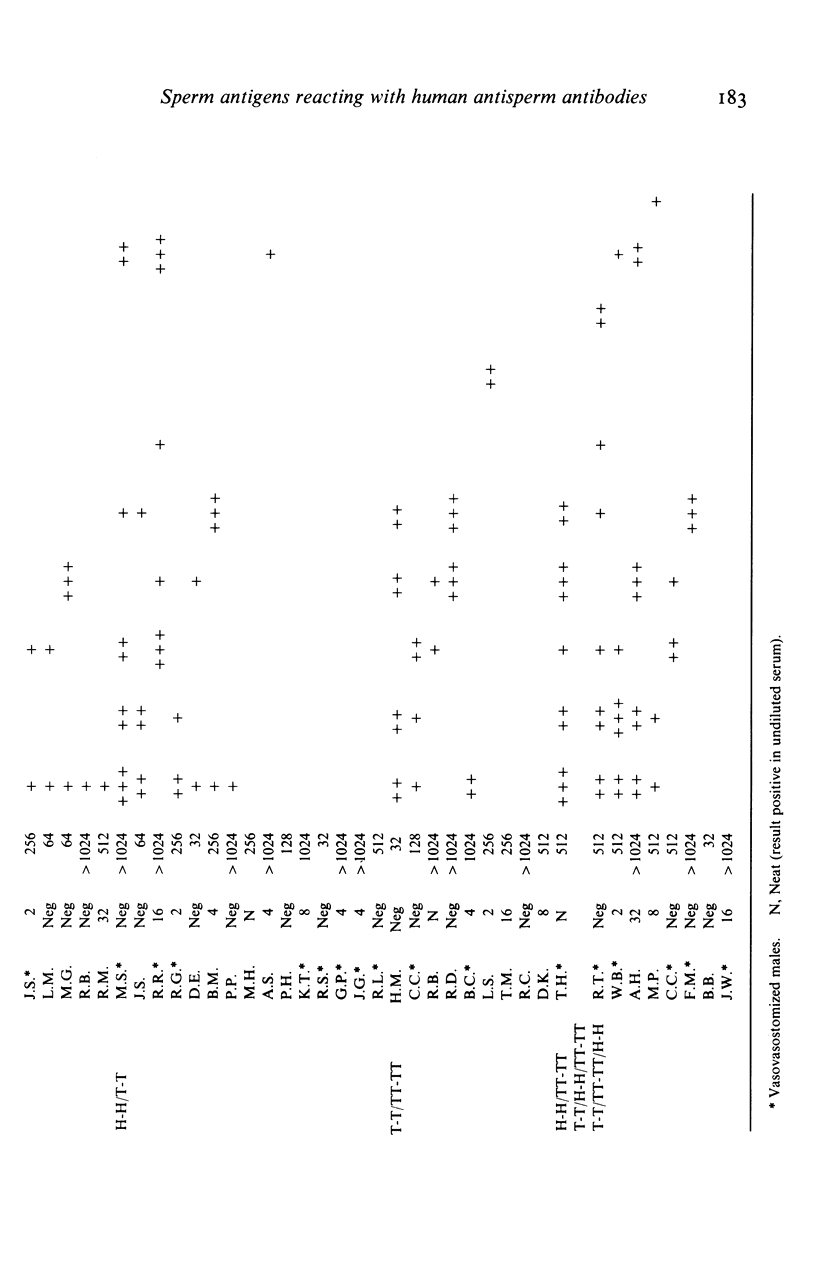
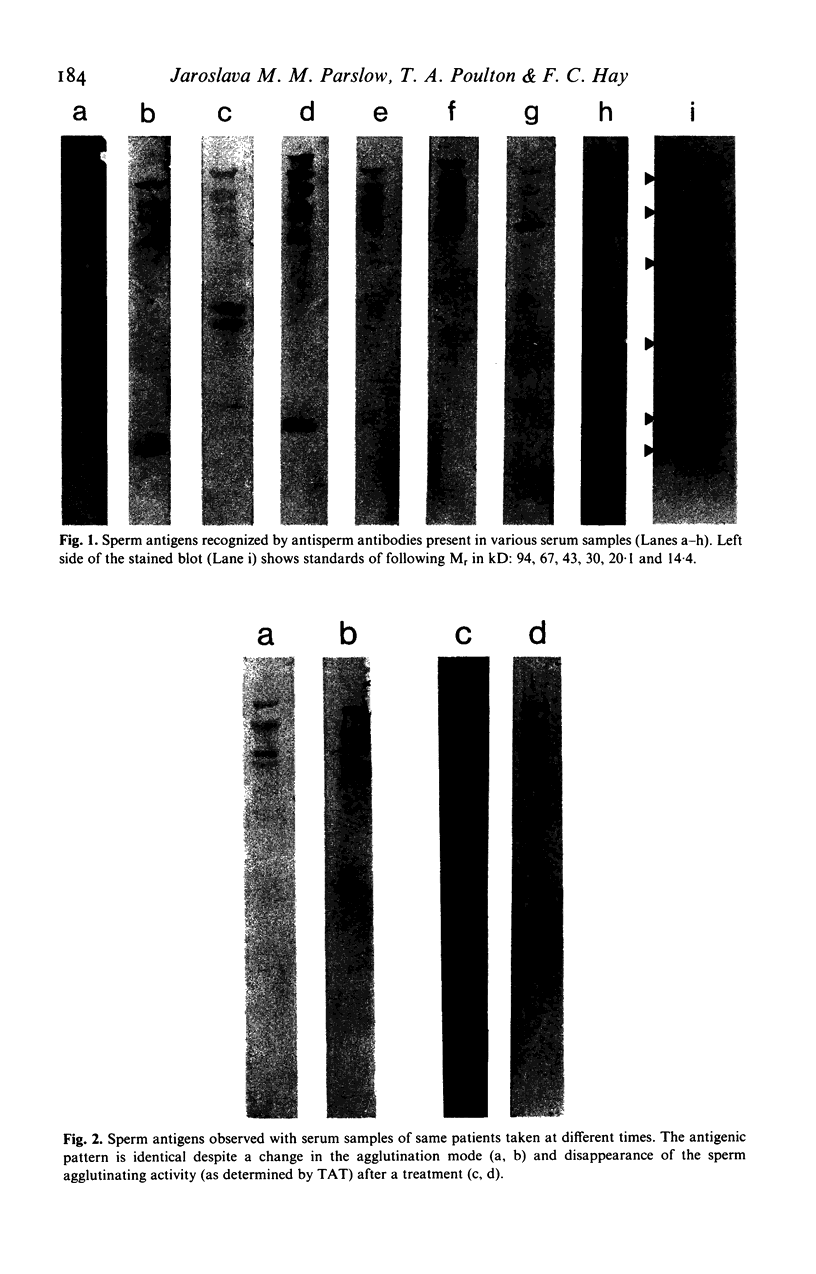
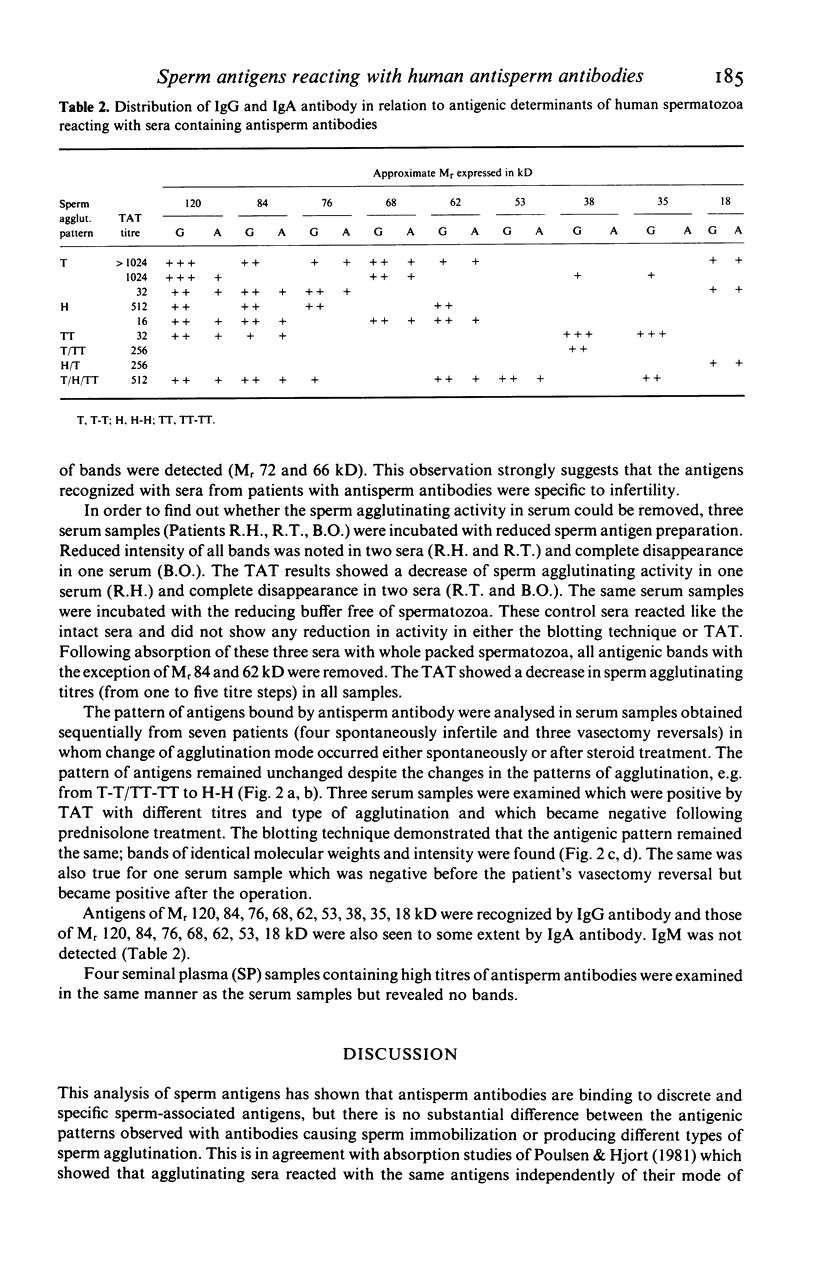
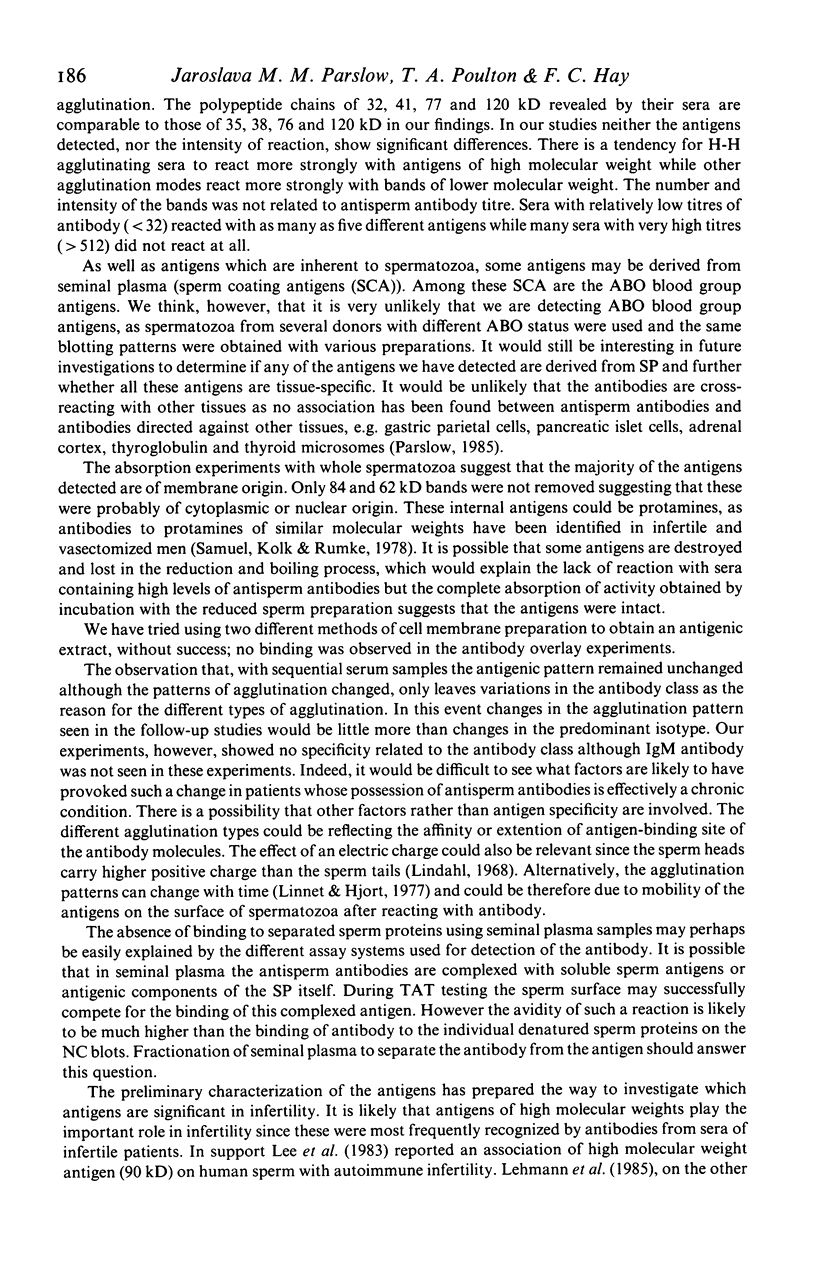

Images in this article
Selected References
These references are in PubMed. This may not be the complete list of references from this article.
- Fjällbrant B. Interrelation between high levels of sperm antibodies, reduced penetration of cervical mucus by spermatozoa, and sterility in men. Acta Obstet Gynecol Scand. 1968;47(1):102–118. doi: 10.3109/00016346809157471. [DOI] [PubMed] [Google Scholar]
- Friberg J. A simple and sensitive micro-method for demonstration of sperm-agglutinating activity in serum from infertile men and women. Acta Obstet Gynecol Scand Suppl. 1974;36:21–29. doi: 10.3109/00016347409156399. [DOI] [PubMed] [Google Scholar]
- Friberg J. Immunological studies on sperm-agglutinating sera from men. Acta Obstet Gynecol Scand Suppl. 1974;36:43–50. doi: 10.3109/00016347409156401. [DOI] [PubMed] [Google Scholar]
- Hellema H. W., Rümke P. The micro-sperm immobilization test: the use of only motile spermatozoa and studies of complement. Clin Exp Immunol. 1978 Jan;31(1):1–11. [PMC free article] [PubMed] [Google Scholar]
- Hjort T., Poulsen F. Analysis of auto-antigens in the human sperm membrane by a F(ab')2 blocking system. J Clin Lab Immunol. 1981 Jul;6(1):61–67. [PubMed] [Google Scholar]
- Husted S., Hjort T. Sperm antibodies in serum and seminal plasma. Int J Fertil. 1975;20(2):97–105. [PubMed] [Google Scholar]
- KIBRICK S., BELDING D. L., MERRILL B. Methods for the detection of antibodies against mammalian spermatozoa. II. A gelatin agglutination test. Fertil Steril. 1952 Sep-Oct;3(5):430–438. doi: 10.1016/s0015-0282(16)31026-3. [DOI] [PubMed] [Google Scholar]
- Kyhse-Andersen J. Electroblotting of multiple gels: a simple apparatus without buffer tank for rapid transfer of proteins from polyacrylamide to nitrocellulose. J Biochem Biophys Methods. 1984 Dec;10(3-4):203–209. doi: 10.1016/0165-022x(84)90040-x. [DOI] [PubMed] [Google Scholar]
- Laemmli U. K. Cleavage of structural proteins during the assembly of the head of bacteriophage T4. Nature. 1970 Aug 15;227(5259):680–685. doi: 10.1038/227680a0. [DOI] [PubMed] [Google Scholar]
- Lee C. Y., Lum V., Wong E., Menge A. C., Huang Y. S. Identification of human sperm antigens to antisperm antibodies. Am J Reprod Immunol. 1983 Jun;3(4):183–187. doi: 10.1111/j.1600-0897.1983.tb00243.x. [DOI] [PubMed] [Google Scholar]
- Lehmann D., Temminck B., Da Rugna D., Leibundgut B., Müller H. Blot-immunobinding test for the detection of anti-sperm antibodies. J Reprod Immunol. 1985 Dec;8(4):329–336. doi: 10.1016/0165-0378(85)90007-5. [DOI] [PubMed] [Google Scholar]
- Linnet L., Hjort T. Sperm agglutinins in seminal plasma and serum after vasectomy: correlation between immunological and clinical findings. Clin Exp Immunol. 1977 Dec;30(3):413–420. [PMC free article] [PubMed] [Google Scholar]
- Morgan H., Stedronska J., Hendry W. F., Chamberlain G. F., Dewhurst C. J. Sperm/cervical-mucus crossed hostility testing and antisperm antibodies in the husband. Lancet. 1977 Jun 11;1(8024):1228–1230. doi: 10.1016/s0140-6736(77)92437-0. [DOI] [PubMed] [Google Scholar]
- Parslow J. M., Poulton T. A., Besser G. M., Hendry W. F. The clinical relevance of classes of immunoglobulins on spermatozoa from infertile and vasovasostomized males. Fertil Steril. 1985 Apr;43(4):621–627. doi: 10.1016/s0015-0282(16)48507-9. [DOI] [PubMed] [Google Scholar]
- Parslow J. M., Royle M. G., Kingscott M. M., Wallace D. M., Hendry W. F. The effects of sperm antibodies on fertility after vasectomy reversal. Am J Reprod Immunol. 1983 Jan-Feb;3(1):28–31. doi: 10.1111/j.1600-0897.1983.tb00208.x. [DOI] [PubMed] [Google Scholar]
- Poulsen F., Hjort T. Identification of auto-antigens of the human sperm membrane. J Clin Lab Immunol. 1981 Jul;6(1):69–74. [PubMed] [Google Scholar]
- Rumke P., Van Amstel N., Messer E. N., Bezemer P. D. Prognosis of fertility of men with sperm agglutinins in the serum. Fertil Steril. 1974 May;25(5):393–398. doi: 10.1016/s0015-0282(16)40388-2. [DOI] [PubMed] [Google Scholar]
- Samuel T., Kolk A. H., Rümke P. Studies on the immunogenicity of protamines in humans and experimental animals by means of a micro-complement fixation test. Clin Exp Immunol. 1978 Aug;33(2):252–260. [PMC free article] [PubMed] [Google Scholar]
- Thomas A. J., Jr, Pontes J. E., Rose N. R., Segal S., Pierce J. M., Jr Microsurgical vasovasostomy: immunologic consequences and subsequent fertility. Fertil Steril. 1981 Apr;35(4):447–450. doi: 10.1016/s0015-0282(16)45442-7. [DOI] [PubMed] [Google Scholar]




